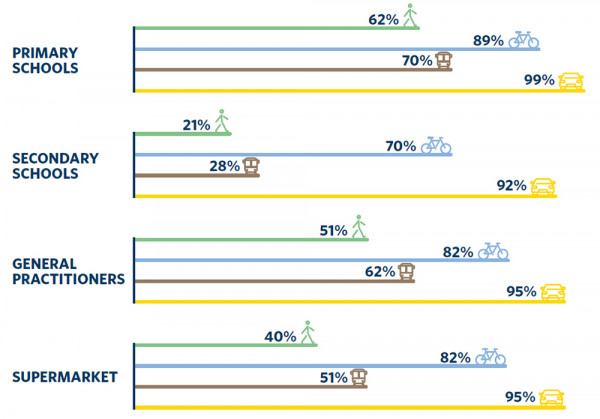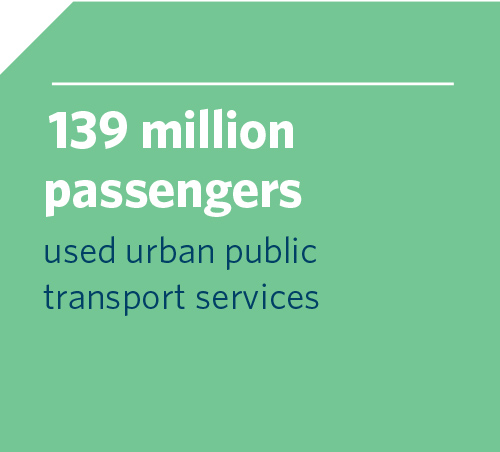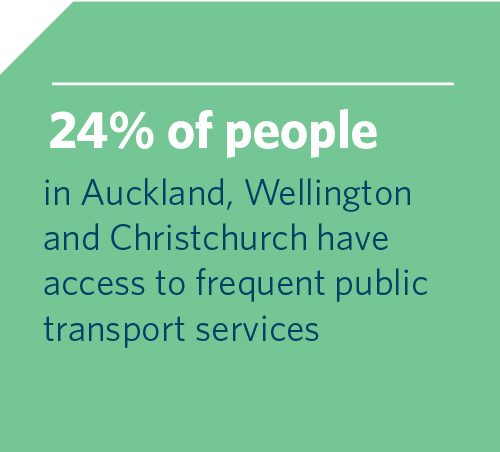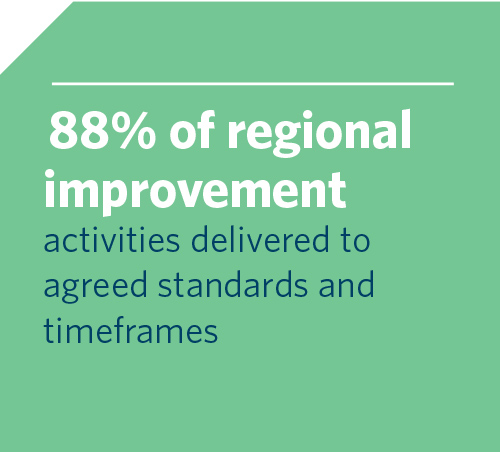New Zealand requires more accessible, frequent and affordable multi-modal transport choices, including walking and cycling, public transport, and mass transit and a reduction in single private vehicle use. Improved management of transport demand and operations is needed, and transport investment must take a mode-neutral approach, enabling wider and longer-term social, cultural, economic and environmental outcomes in cities and regions.
In 2019/20, we aimed to accelerate the shift from private car to public transport, walking and cycling through national, system-level initiatives and place-based initiatives in Auckland, Wellington, Christchurch, Hamilton, Tauranga and Queenstown. We were also a key partner in the Provincial Growth Fund programme, working with the Ministry of Business, Innovation and Employment to advise on investment opportunities and applications and to release funding for land transport projects.
Growing the share of travel via public transport and active modes (like walking, cycling and scooter use) and reducing the reliance on single occupancy vehicles helps shape our cities and towns to be places that can support a better quality of life, both now and in the future.

* This year, we changed the method of calculating this measure from using Google API (via Connected Journey Solutions) to a whole-of-network analysis using freely available sources (General Transit Feed Specification files, Open Street Maps, and the TomTom network that Waka Kotahi owns).

In September 2019, we released Keeping Cities Moving, our plan to increase the wellbeing of New Zealanders by increasing uptake of public transport and active modes (known as ‘mode shift’).
Trips using public transport and active modes slightly improved from 15.7 percent last year to 16.1 percent this year. Mode share results from the Household Travel Survey show that most trips continue to be undertaken by car or van, with pedestrian trips the next most common. Over time we expect to see a larger proportion of trips by public transport, walking and cycling.

* This includes skateboarders and children in pushchairs.
** This includes aircraft, boats excluding ferry trips, mobility scooters and other modes like horse
riding.
During 2019/20, the mode shift plan for Auckland was completed, and the mode shift plans for Tauranga, Hamilton, Wellington, Christchurch and Queenstown were substantially completed.
Also during the year, several significant infrastructure and planning projects to encourage mode shift were approved, including Northern Busway Enhancements in Auckland, the Hamilton to Auckland Start Up Passenger Rail Service, the Northern Pathway shared path from Westhaven to Akoranga, and the Whangārei city Transportation Network Strategy Programme business case.



The Urban Cycleways Programme has now completed 87 percent of its project milestones. As at 30 June 2020, $98 million of the $100 million in funding had been spent. Of the original 54 projects in the programme, 17 are still in progress, 13 are forecasting completion by 30 June 2021, and 4 are forecasting completion by 30 June 2022.
Under this programme, we have delivered 226.8km of walking and cycling facilities, including 33.2km in 2019/20. Since the last NLTP, we have delivered 384km of walking and cycling facilities with 60 percent funded from this programme. During this period, we have also seen a pleasing ongoing increase in cycling counts in the three main urban centres.
The Innovating Streets for People Programme aims to make it faster and easier to transition streets to safer and more liveable spaces. The programme helps the sector plan, design and develop towns and cities by providing a variety of support options targeted at retrofitting streets to reduce vehicle speeds and create more space for people. We completed phase one of the programme, which included case studies in eight cities. In phase two, we launched a fund to encourage councils to try a tactical urbanism approach to project delivery. Funding has been approved for over 40 projects, which will be delivered over the coming year as we support councils to improve their capability.
Transport enables regions to grow by providing access to jobs, education and essential services that enable regions to grow. It is a priority in the Government Policy Statement on land transport.
We delivered on our commitments as a key partner in the Provincial Growth Fund, helping to build a regional economy that is sustainable, inclusive and productive.
We are also delivering 13 state highway projects funded by the New Zealand Upgrade Programme regional package. These projects support regional economic development and address the main challenges our regional state highway networks face, including safety risks, resilience and congestion problems, accessibility and travel-time reliability.
